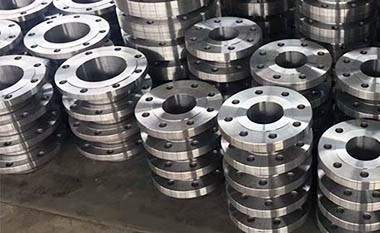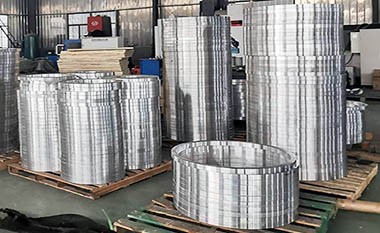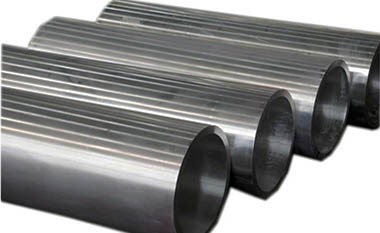Shaped aluminum components produced by applying compressive forces, known for their high strength and reliability in aerospace, automotive, and heavy machinery applications.
aluminum forgings Supplied Forms
-
7075 aluminum forging
7075 aluminum alloy forgings are widely used in various industries due to their high strength, lightweight, and excellent fatigue resistance, particularly in the aerospace, automotive, defense, shipbuilding, and industrial machinery sectors.
-
6061 t6 forged aluminum
After forging, 6061-T6 can achieve better mechanical properties because the arrangement of the grain structure enhances strength and toughness.
-
2618 aluminum forging
The high-temperature resistance, high strength, and corrosion resistance of 2618 aluminum forgings allow them to maintain excellent performance even under extreme conditions, commonly used in high-demand fields such as aerospace and motorsports.
What is Aluminum Forging?
Aluminum forging is a manufacturing process that uses extreme pressure to shape aluminum alloys into high-strength, durable parts at either high or ambient temperatures.
In the aluminum forging process, an aluminum billet or workpiece is deformed under great pressure through methods such as stamping, hammering, or extrusion to obtain the desired shape and properties. This process can occur under different temperature conditions, ranging from just below the alloy's recrystallization temperature to slightly above it, or even at room temperature.
Aluminum forging enhances the material's grain structure, significantly improving the mechanical properties of the part, particularly in terms of strength, durability, and fatigue resistance.
Is aluminum good for forging?
Aluminum materials are lightweight, corrosion-resistant, and highly durable, making them an ideal choice for various forging techniques and applications. With its superior strength, aluminum forgings are particularly suitable for industries that demand high performance and safety. Whether in aerospace, semiconductors, defense, or marine sectors, aluminum forgings deliver exceptional performance in harsh working environments, ensuring reliability and durability under extreme conditions.
Why Choose Aluminum for Forging?
There are several reasons to choose aluminum for forging:
- Lightweight: Aluminum's low weight makes it effective at reducing the overall structural load in many applications.
- High Strength-to-Weight Ratio: Aluminum offers a good balance between strength and weight, making it ideal for applications that need to maintain strength while minimizing weight.
- Corrosion Resistance: Aluminum exhibits excellent resistance to corrosion, maintaining stable performance in harsh environments.
- High-Temperature Resistance: Aluminum can withstand high temperatures, making it suitable for a variety of industrial sectors.
For these reasons, aluminum is an ideal material for use in aerospace, automotive, and other industrial applications.
HC Forged Aluminum Products Available
HC Aluminum Co., Ltd offers a range of standard and custom forged products in various sizes to meet your needs.
HC Aluminum Co., Ltd provides aluminum forgings in various grades, and we can produce the sizes you require, whether for single pieces or large-scale production. Our skilled craftsmen can forge aluminum rings, hubs, discs, round bars, flat bars, stepped shafts, and blocks, so you can purchase the shapes you need. The sizes of aluminum forgings vary depending on the shape. Our aluminum open-die forgings feature no need for molds, quick turnaround times, and production from a single piece to thousands of units.
- Aluminum Alloy:, 1100, 2618, 5083, 6061, 7079, 2014, 3003, 5086, 7039, 7175, 2024, 4032, 5383, 7050, 2219, 5052, 5456, 7075
- Forged Products:Complex Shapes, Bars, Step Shafts, Eccentric Shafts amp; Rotor Shafts, Hollows, Hubs amp; Tooled Forgings, Forged amp; Rolled Rings
| Aluminum Alloy | Forged Product Types |
| 1100 | Complex Shapes, Bars, Forged amp; Rolled Rings |
| 2618 | Complex Shapes, Bars, Step Shafts, Eccentric Shafts, Rotor Shafts |
| 5083 | Bars, Hollows, Hubs, Forged amp; Rolled Rings |
| 6061 | Complex Shapes, Bars, Step Shafts, Eccentric Shafts, Hollows |
| 7079 | Step Shafts, Eccentric Shafts, Rotor Shafts, Forged amp; Rolled Rings |
| 2014 | Complex Shapes, Bars, Step Shafts, Hubs, Forged amp; Rolled Rings |
| 3003 | Bars, Hollows, Hubs, Tooled Forgings |
| 5086 | Bars, Hollows, Hubs, Forged amp; Rolled Rings |
| 7039 | Complex Shapes, Bars, Step Shafts, Rotor Shafts |
| 7175 | Eccentric Shafts, Rotor Shafts, Tooled Forgings |
| 2024 | Complex Shapes, Bars, Step Shafts, Hubs, Forged amp; Rolled Rings |
| 4032 | Bars, Step Shafts, Eccentric Shafts, Forged amp; Rolled Rings |
| 5383 | Complex Shapes, Bars, Hollows, Tooled Forgings |
| 7050 | Complex Shapes, Bars, Step Shafts, Forged amp; Rolled Rings |
| 2219 | Complex Shapes, Bars, Step Shafts, Hubs, Tooled Forgings |
| 5052 | Bars, Hollows, Forged amp; Rolled Rings |
| 5456 | Complex Shapes, Bars, Hollows, Hubs |
| 7075 | Step Shafts, Eccentric Shafts, Rotor Shafts, Forged amp; Rolled Rings |
Advantages of Forged Aluminum
Forged aluminum offers numerous advantages, such as excellent strength-to-weight ratio, lightweight low density, good corrosion resistance, and high thermal conductivity. Additionally, forged aluminum provides design flexibility, excellent surface finish, outstanding fracture toughness, as well as good fatigue performance and resistance to crack propagation, maintaining stable performance even in low-temperature environments.
Forged aluminum and aluminum alloys offer many benefits. The forging process does not limit the ability of manufacturers to manipulate and cut the material, allowing forged aluminum alloys to be shaped into complex and intricate designs. The mechanical properties of forged aluminum alloys can rival those of steel, while the strength-to-weight ratio of aluminum surpasses that of steel.
The surface of aluminum forgings can exhibit a range of finishes, from very smooth to relatively sharp, offering good design flexibility and aesthetic appeal, often eliminating the need for additional polishing, while also being cost-effective.
Aluminum Forging Process
| Forging Process | Description | Applications/Benefits |
| Open-Die Forging | Involves hammering or pounding large aluminum blocks (up to 200,000 pounds) to form large components. The aluminum is heated and shaped by an open die press. | Used to create large metal components. Improves alloy strength and structural integrity. Limitations based on the size of the starting block. |
| Closed-Die Forging | Utilizes two or more dies with impressions to press, pound, or squeeze aluminum into desired shapes and patterns. Common for complex parts production. | Produces complex parts with precise tolerances. Suitable for both large and small parts. Enhances strength and tightness of aluminum alloy products. More cost-effective for large production runs. Results in better surface finish and is environmentally friendly. Limited by size and shape when compared to casting. |
| Rolled-Ring Forging | Begins with open-die forging to create a donut-shaped preform. The ring-rolling process applies pressure to modify the ring's thickness and diameter. | Produces high-strength rings in various sizes and thicknesses. Used in aerospace components and other industries requiring durable rings. Allows precise modifications of ring dimensions. |
Forged Aluminum versus Cast Aluminum, What is the Difference?
There are significant differences in the manufacturing processes of forged and cast aluminum materials.
- Casting: In casting, metal is heated to a molten state and poured into a mold to form a shape, which is suitable for creating complex geometries.
- Forging: In forging, the metal remains solid, and pressure or impact is applied to shape the metal, altering its form.
Both casting and forging have their unique advantages and disadvantages, and the choice of process depends on specific application requirements and cost considerations.
- Casting: Suitable for parts that require complex shapes and lower production costs.
- Forging: Better suited for critical components requiring high strength, toughness, and reliability.
In some cases, the superior performance of forged parts may make them the preferred choice in safety-critical areas, even though they tend to be more expensive and complex.
Below is a comparison of the casting process and the forging process for aluminum, presented in a table:
| Property | Casting Process | Forging Process |
| Process | Metal is heated to a molten state and poured into a mold | Metal is heated and shaped under mechanical pressure |
| Complexity of Shape | Can create complex geometries, suitable for intricate shapes | Typically difficult to produce complex shapes, requires additional machining |
| Production Efficiency | Efficient with fewer subsequent machining steps | Requires additional machining, higher production cost |
| Quality Control | Can be affected by impurities, impacting product quality | Internal impurities and voids are eliminated, enhancing material properties |
| Microstructure | May result in voids, inclusions, or alloy segregation | Improves microstructure, enhancing toughness and strength |
| Application Suitability | Suitable for parts with complex shapes | Ideal for applications requiring high safety and durability |
| Cost | Typically lower, suitable for mass production | Higher cost, but with superior performance |
From the table above, you can clearly see the main differences between the casting and forging processes and their respective pros and cons.
FAQ
What is Impression Die Forging?
Impression die forging, also known as closed-die forging, utilizes a mold that surrounds the material to shape the metal part into the desired form. Compared to other forging processes, closed-die forging requires greater compressive force to fill the die cavity and form the entire part.
What is aluminium hot forging?
Aluminium hot forging is a manufacturing process where aluminum is shaped at elevated temperatures, typically above its recrystallization point, using high pressure. This process enhances the material's ductility and allows for complex shapes with improved mechanical properties.
What is aluminum cold forging?
Aluminum cold forging is a process where aluminum is shaped at or near room temperature without the application of heat. This method increases the strength of the material through work hardening, resulting in precise dimensions and a smooth surface finish.
What temperature is needed for aluminum forging?
The temperature for aluminum forging typically ranges from about 300°C to 500°C (572°F to 932°F) for hot forging. For cold forging, the process is done at or near room temperature.
How good is forged aluminum?
Forged aluminum is known for its superior strength, durability, and resistance to fatigue compared to cast aluminum. The forging process aligns the grain structure of the material, resulting in enhanced mechanical properties.
What is the best aluminum for forging?
The best aluminum alloys for forging are typically those in the 2000, 6000, and 7000 series, such as 2024, 6061, and 7075, due to their excellent strength-to-weight ratio and good workability. The choice of alloy depends on the specific application requirements.



